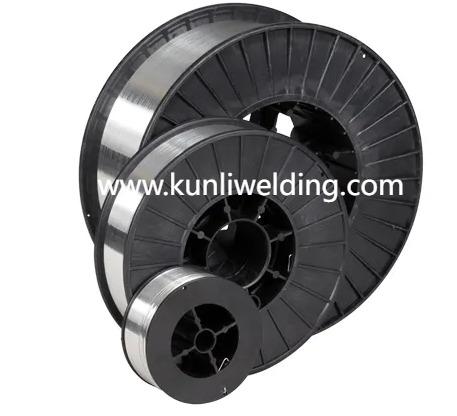Can Kunliwelding packaging improve ER5087 performance during coastal transport

When maintenance teams and shipbuilders unpack reels and rods at a dockside yard, they often ask how to preserve welding performance over long storage and varied transport. Aluminum Welding Wire ER5087 is a common choice for marine and heavy structural work, and keeping its properties intact begins long before the arc strikes. Proper storage and careful handling reduce the chance of surface contamination and feeding faults that lead to rework and downtime.
Start with packaging and receiving checks. Inspect reels for intact seals and undamaged flanges and note any signs of moisture ingress during transit. Unwrap only at the welding station and avoid laying exposed ends on dirty benches. When reels arrive sealed and on their original packs they hold protection against contamination and condensate which can darken the surface film and affect wetting during welding. Keep records of lot numbers and retain a short sample length from each reel to help trace any future anomaly back to a delivery batch.
Storage location matters. Choose a dry, temperature stable room away from direct sunlight and sources of airborne salts or acids. In coastal sites where sea spray and humid air are common, consider secondary sealed containers for long term stock and move reels to a sheltered acclimation space before opening them for use. If a reel has been exposed to cold transit into a warm shop, allow time for gradual temperature equalization in its sealed pack to avoid surface sweating and potential oxidation before beginning welding. These modest steps lower the chance that welds will develop porosity or inconsistent fusion during production.
Handling discipline on the shop floor also preserves feedability and surface quality. Avoid dropping reels or allowing wire ends to scrape on rough surfaces. If straight rods are used, keep tube ends closed until the moment of use and do not over bend them during transport. For spool fed systems ensure liners and drive rolls are matched to the chosen diameter and alloy so the winding does not kink inside the liner. Periodic quick run offs to check for surface contamination and to set a known feed profile for each lot reduce surprises at qualification or on critical seams.
Environmental protection extends to the welding cell. Use clean gloves and avoid oils on hands when handling wire. Keep dedicated, labeled storage racks for aluminum wire separated from steel consumables to prevent cross contamination. Where space and budget permit employ small desiccant packets inside storage boxes for longer term stock to keep local humidity low. For field work on decks or towers pack reels in protective covers and bring only the reel in use up to elevated positions to reduce the exposure window.
When preparing to weld, adopt a short acceptance routine. Visually inspect the wire and perform a short run on scrap that mirrors the joint style and accessibility of the production part. Note arc stability bead profile and transfer behavior then record the drive settings and any liner choices that produced the sample bead. When suppliers provide packaging notes and suggested drive settings for an alloy it saves qualification time and supports consistent performance across shifts and sites.
Repair and field maintenance bring special constraints. For repairs at sea or on coastal platforms, limit on board stock to sealed small reels or short straight rods in capped tubes and include simple acclimation instructions in the kit. Minimize handling at height and train crews to run a short pre weld check and to keep a retained sample with the repair record to support traceability should an inspection flag a concern later.
Finally remember that alloy specific attention matters. ER5087 contains alloying elements that contribute to its performance in demanding environments and that influence how it should be stored and handled. Following supplier guidance on packaging acclimation and feed hardware helps maintain those properties from receipt to finished weld. When operations line up packaging handling and validation practices with material intent the result is fewer surprises and smoother inspections. For product information guidance on handling and to discuss supply formats visit www.kunliwelding.com .
- Art
- Causes
- Crafts
- Dance
- Drinks
- Film
- Fitness
- Food
- Jogos
- Gardening
- Health
- Início
- Literature
- Music
- Networking
- Outro
- Party
- Religion
- Shopping
- Sports
- Theater
- Wellness


